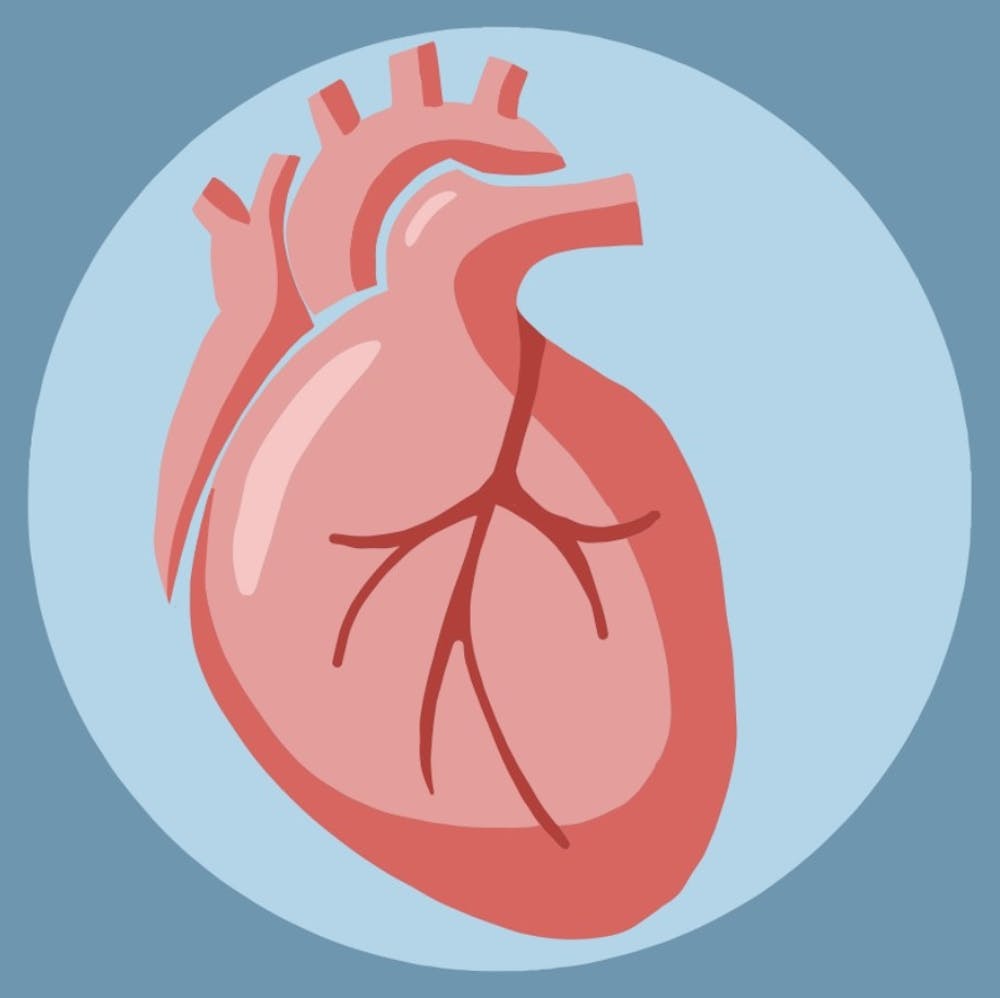Researchers at the University’s School of Medicine recently published an article in the scientific journal Circulation Research that decodes the genes related to coronary artery disease. The study enabled researchers to better understand CAD’s genetic risk factors and to discover a gene with potential applications to treating it.
According to the Centers for Disease Control and Prevention, CAD is the most common type of heart disease in the U.S. with approximately one person dying of heart disease every 36 seconds.
“It is the leading cause of death in the United States and worldwide,” said Redouane Aherrahrou, a postdoctoral fellow in the University’s Civelek Lab, which studies genetic mechanisms that influences cardiovascular diseases susceptibility.
According to the CDC, CAD is caused by plaque buildup in the walls of the arteries that supply blood to the heart and other parts of the body. This plaque is composed of cholesterol and other fatty substances that over time can narrow or completely block arteries. A hard fibrous cap surrounds the buildup, but dangerous complications that can arise if the cap is too thin.
“If that cap is thin, then there is a high possibility that it will rupture,” said Mete Civelek, assistant professor of Biomedical Engineering and Center for Public Health Genomics faculty member. “And when it ruptures … you get all kinds of blood clotting and that will lead to a … heart attack or stroke.”
Known risk factors of CAD include lifestyle choices such as smoking, diet and exercise, but the genetic factors affecting CAD are poorly understood. The University’s study is investigating the genes already associated with CAD in order to get a better understanding of their impact on the disease.
According to Civelek, scientists know there is a genetic basis to CAD. What they don't know are the processes taking place at a molecular and cellular level of the genes that have been shown to affect the disease’s risk.
To understand the processes resulting from CAD relevant genes, Civelek says that University researchers conducted a “genome wide association study in a dish.”
This methodology includes studying in-vitro cell cultures, or cells grown within a controlled environment like a test tube, from 151 ethnically diverse heart transplant donors.
The study revealed that almost half of the genes with a known association to coronary artery disease risk are functioning in the vessel wall by affecting individuals’ muscle cell function. Specifically, the genes affect vascular smooth muscle cells — which are responsible for creating the cap on top of a region of plaque buildup — and their calcification, reproduction and migration.
According to Aherrahrou, VSMC migration is the movement of the muscle cells from one place to another place to produce the fibrous cap.
“Proliferation plays also an important role in the stability of this fibrous cap,” Aherrahrou said.
VSMC proliferation, or reproduction, affects the amount of fibrous cap surrounding plaque buildup, and therefore influences cap stability. Lower proliferation levels result in a thinner fibrous cap with greater instability. Higher levels of proliferation produce a thicker protective cap that offers more stability.
If the fibrous cap is not stable, a rupture can occur during normal blood circulation and cause a heart attack or stroke.
“If this cap is thick, then the chances of that lesion rupturing is lower,” Civelek said. “[Therefore], smooth muscle cells ... play a very, very important role in this cap thickness.”
The study also looked at another gene, MIA3, to better understand its role in CAD.
By analyzing gene variants, researchers found a correlation between MIA3 expression — or the translation of MIA3 into a functional protein — and VSMC reproduction.
The study’s conclusion indicates that high MIA3 expression may promote VSMC functions such as increased proliferation, which is essential in the formation or maintenance of a protective fibrous cap.
According to Civelek, the ultimate goal of this line of research is to identify novel drug targets for CAD in order to prevent heart attacks and strokes.
“Of course it needs to be tested, but [MIA3 is] exactly the kind of thing that we could propose as a drug target,” Civelek said. “Current drugs for coronary artery disease treat the risk factors, such as cholesterol or hypertension.”
Civelek says that the applications of the study address the genetic factors that are functioning at the vascular wall level, rather than regulating a patients' blood lipids, glucose or other risk factors associated with CAD.
“So if you look at the targets that we identified, and then target those [for] therapies, then you will be targeting the vessel wall directly, and not … the risk factors,” Civelek said. “That's how the drug will differ. We're not going to target irregular cholesterol — we're going to … go to where the disease develops.”
Following this study, Civelek says that he would like to study molecular phenotypes, or molecular-level characteristics such as protein abundance, to understand how genetic variants affect individuals’ muscle cell gene expression.
“The molecular phenotypes that we're studying right now are probably going to create another list of genes that we can look at or proteins that we can look at as potential drug targets,” Civelek said.







